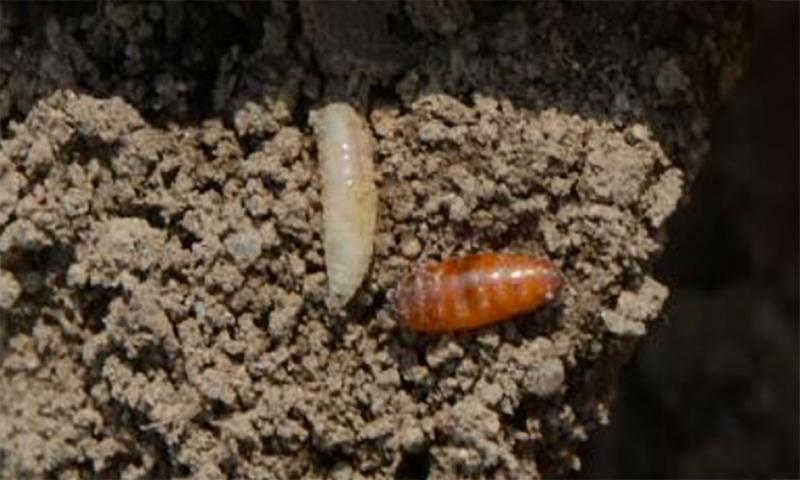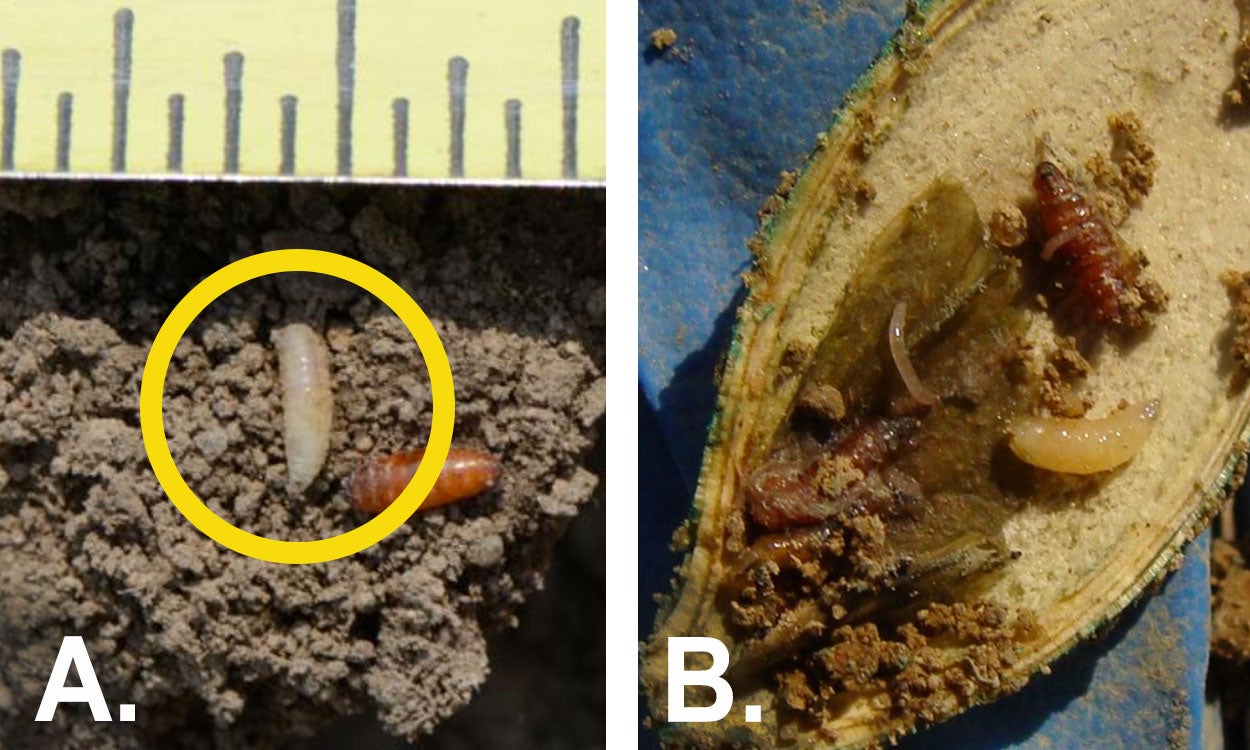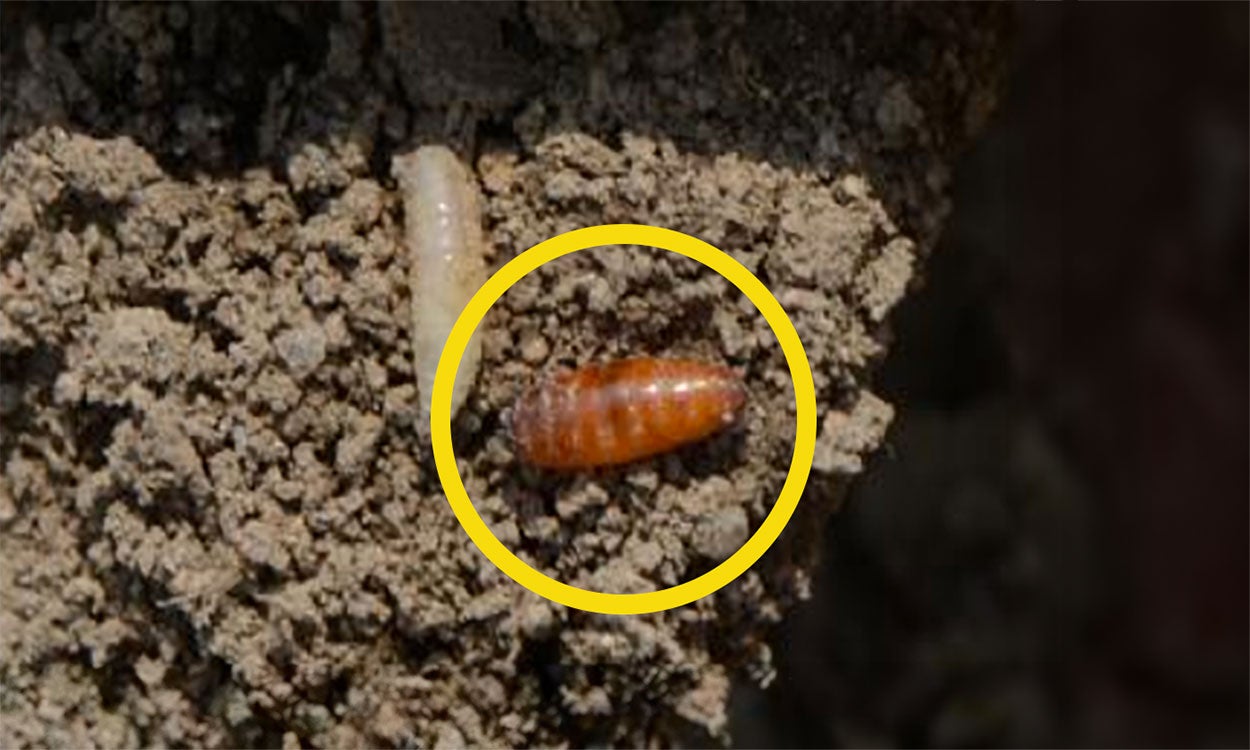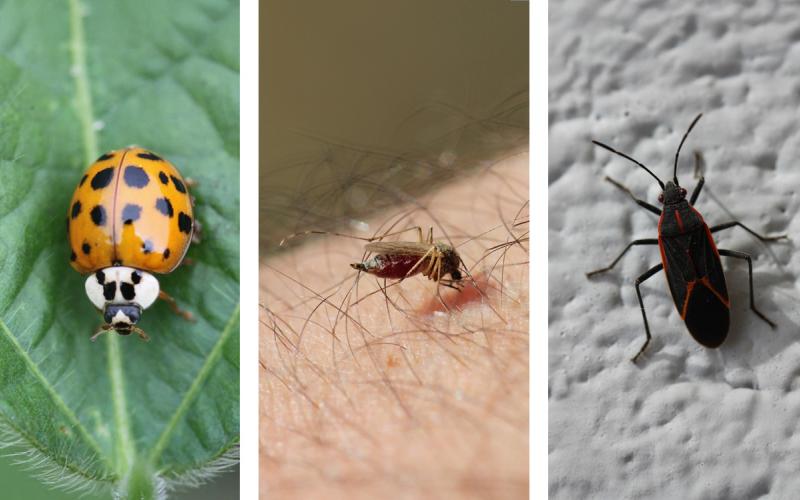
Written collaboratively by Adam Varenhorst, Philip Rozeboom, Patrick Wagner, and Brad McManus.
Originally Submitted: May 30, 2024
Current spring conditions, including wet soil and cool temperatures, could result in seedcorn maggot issues in South Dakota. Initial observations of infested fields are often reduced stands or low emergence. Each week, we estimate seedcorn maggot emergence periods to determine when infestation is most likely. In northern South Dakota, the second emergence hasn’t occurred and observations of early instar seedcorn maggots have been reported. In South Dakota, 3 to 5 generations of seedcorn maggots may occur during the season with the earlier generations typically causing the most issues. However, if fields are replanted it is possible that another generation of seedcorn maggots could impact those fields.
Although their name suggests they are primarily a pest of corn, seedcorn maggots will feed on the developing seeds of many different plants including soybean. It is well documented that seedcorn maggot densities are much higher in fields with high organic matter such as manure or green plant residue. Regardless of the residue situation, recently tilled fields are more attractive to the adult females of the seedcorn maggot and will be used for egg laying.
Identification
Larvae

Seedcorn maggot larvae are small (1/4 of an inch long), legless, and white or cream-colored (Figure 1-A). The later instar or growth stage larvae are stouter than the earlier instar larvae (Figure 1-B). The seedcorn maggots have a black mouth with hook-like mouthparts that are used to feed on developing seeds.
Pupae

The pupae of the seed corn maggots are brown to reddish-brown and resemble a wheat seed (Figure 2).
Adults

The adults are approximatley 1/20 of an inch in size and vary from gray to brown in color with red eyes (Figure 3).
Scouting

The best method of scouting for seedcorn maggot activity is to check fields for stand loss. Unlike many insect pests, seedcorn maggots often affect the entire field instead of just having hot-spots. In areas with stand loss, evaluate the plants and seeds for signs of feeding (Figure 4), hollowed out seeds, or the presence of the seedcorn maggots.
Management
There are no rescue treatments available for seedcorn maggots. Scouting for seedcorn maggot activity will not help the current stand of plants. However, scouting will inform management strategies if replanting is necessary. Insecticide seed treatments or applying in-furrow insecticides can reduce feeding in fields with a known seedcorn maggot infestations.
For insecticides labeled for seedcorn maggot in South Dakota, refer to the latest Corn and Soybean Pest Management Guides.


